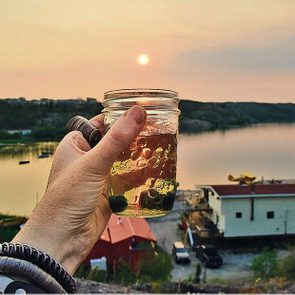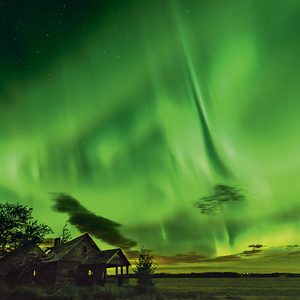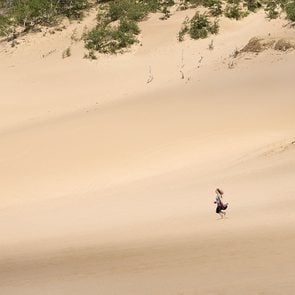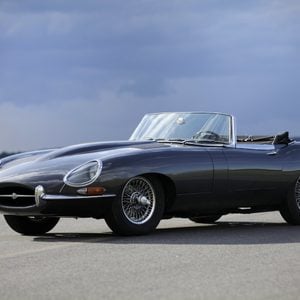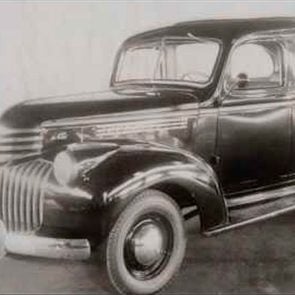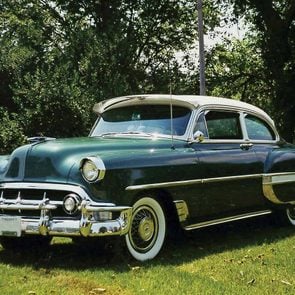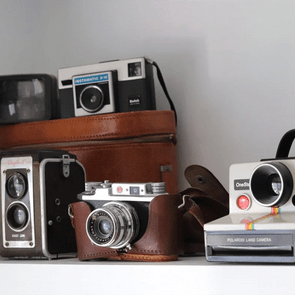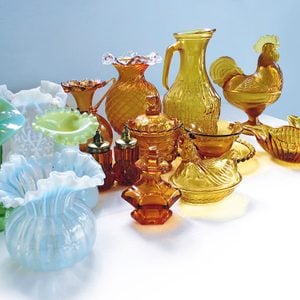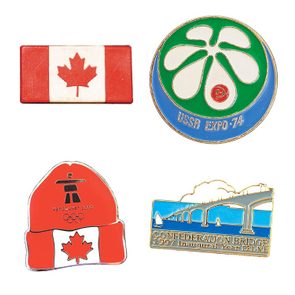Aurora Borealis Hunting in Yellowknife
Our group heads out with Joe Buffalo Child, tonight’s North Star Adventures tour guide. He offers affable greetings in English as well as other languages for all on board the tour van.
“Spot five stars and I’ll find an aurora,” Joe declares, with the confidence of a seasoned hunter. “Better yet, find the Big Dipper and you’ll see aurora borealis as if you’re inside a cosmic shower.”
Depending on cloud cover, Yellowknife’s northern lights can be visible for an hour or so on either side of midnight, for about two-thirds of the year—omitting the summer months, when you’ll have to settle for the midnight sun.
Yet, it’s aurora viewing that lures adventurers from all over the world to this diverse and extraordinary city located on the north shore of Great Slave Lake in Canada’s Northwest Territories.
Summer here offers warm temperatures, boating, fishing and sightseeing. Winters can reach -40°C, but if you’re clad in survival layers, you can enjoy snowmobiling, sledging, ice-fishing, and usually clear skies
to add flavour to any aurora experience.
Our van heads west along the highway, among forested wilderness that will eventually meet Alberta, some 760 kilometres away.
“Anyone take the town tour?” Joe asks. “My cousin Dene is this week’s host.”
Among others, I admit participation in the insightful tour of Yellowknife’s unique offerings. The Old Town section boasts a charismatic flair, including the famous “Ragged Ass Road,” and the old miners neighbourhood features plywood shanties reminiscent of a bygone age. Pilots Monument, which sits atop a massive formation called “The Rock” offers incredible views of Great Slave Lake, Back Bay and beyond.
From the van, we glimpse the entrance point to the ice road at the soon-to-be-frozen Great Slave Lake.
“When hunting aurora under this cloud cover, it’s best to keep moving,” says Joe, the van purring along with us ten hardy souls secure in its heated comfort. The mid-September night’s temperature is flirting with the freezing mark.
Joe twiddles the radio knob to a nostalgic golden-oldies channel. “Anybody know this?” He sings along to “Michelle,” his mellow guests joining the rhythm, albeit with comical flair. Joe picks another song, before we eventually make our first stop. We spill out of the van, using Joe’s safe-exit footstool.
“Don’t wander off,’ says Joe. “Stay close and make noise; it’ll keep the bears and foxes away.”
“What about hunting animals?” An unlikely inquiry from Jasmine, a Singaporean.
“Sometimes moose, but mostly reindeer and buffalo.” Joe smiles, using his namesake.
“A lot of meat for one family,” she replied.
“No, the bounty is always shared. Elders first, then the needy, and then everybody else,” he says, proudly. “We share and use everything from animals, nothing is wasted.” Searching the cloudy sky, he shines the spotlight further west. “Let’s keep going.”
After another no-show stop, we meander on. Joe steals skyward glances, while seeking more from his worldly audience. How to make glutton-free Yorkshire pudding? What’s the weather like in Buenos Aires? Which bar made the Singapore Sling famous? He engages each of us, enjoying our responses.
By the third stop, about 65 kilometres out, Joe studies a small break in the clouds. It’s past midnight; cameras are ready on tripods, waiting. Anxiety heightens, feet stamp, hopes dwindle, the cloud cover breaks up but is still substantial.
Joe’s distribution of hot chocolate in paper cups works its magic, renewing faith in our mission of spotting aurora borealis, but as he collects the cups, the warm van beckons once again.
“Hang on!” Joe cries out, his spotlight traces an elongated cloud as it traverses quickly across the clearing sky.
He aims his pre-set camera and reveals a green image. “It’s about a two.” That’s two out of ten—he grades the intensity of the auroras. The naked eye cannot see much colour at this intensity, but the camera can. We need at least a grade four, as the slight green fringes disappear beyond the treed foreground.
He informs us that although intensity and shapes of aurora may be similar, they do have unique characteristics that excite him.
“They’re coming!” Joe announces, as auroras stream overhead in long, parallel ribbons of a green-yellow mix of colour, complemented by reddish tinges; the shapes separate into multiple waved ribbons, before expanding into vertical curtain formations.
Joe explains that oxygen molecules about 100 kilometres above the Earth determine the predominant green and yellow colours. The oxygen molecules at higher altitudes produce a red fringe. The absence of rarer blue and purplish hues, caused by nitrogen molecules, leave something to look forward to another day.
The aurora dances magically across the sky, as if splashed by a painter’s brush. It’s as though I’ve peeked into another realm of ancient secrets and glimpsed the wonders of space—a feeling I describe as stepping inside a rainbow.
Next, check out Keno City—the weirdest place in the Yukon!
If the car’s emblem was hidden, could you tell the difference among the current models of BMW, Audi, Mercedes and Lexus? It’s even harder with SUVs and hatchbacks, which are almost indistinguishable. As I see it, modern production techniques have removed much of the character from new cars. Mass production “systems” complete with soulless computers and robots on the production lines producing identical parts 24 hours a day, seven days a week, are focused on one thing: meeting the targets and quotas set by car manufacturers to maximize efficiency and shareholder profit. Whether hotly contested or not, everyone has an opinion about cars, even those who say they pay little regard to them.
For the most part, cars are designed as an identity, a resonant of the era, on par with music and fashion. They reflect the tone of social values, desires and vision. In very rare cases, certain car brands are more than mere steel, plastic and glass, but a metaphor that breaks all conventionality. It surpasses the rudimentary role of transportation and embraces an opiate love affair with the people. These cars force the world to take notice. The Mustang was one such car.
An Icon in the Making: The Birth of the Mustang
When Ford introduced the Mustang in 1964 at the New York World’s Fair, it unshackled all preconceived restraints as to how an American car should look. The Mustang, though limited by budget restraints, was a car built by a group of guys in white shirts and thin ties using slide rules, who built a car based on passion. I wrote my book because the birth of the Ford Mustang is a great story. The concept evolved from fear and desperation when the Ford Motor Company, after its fiasco with the Edsel, was on a crash course with obscurity; furthermore, the pressures of emission constraints, safety and cost efficiency were a mounting concern. Ford couldn’t afford another disaster. Incredulously, the Mustang seed grew from clandestine group meetings in a motel, and even in office closets, and, gaining strength in surviving internal squabbling, inflated egos, conflicts and controversies, went on to become the most successful car brand in American automotive history, and one of the oldest car brands in the world. The Mustang was more than a life preserver for Ford; it became their flagship, selling more units in its debut year than any other car in history. A record that still holds today. It became an American icon.
I had been working on a book entitled Summer Dreams, a name chosen due to Canada’s limited window of summer days for owners of vintage, chrome, muscle and sports cars to parade their mobile art at car shows and cruise nights. The book comprised nearly 300 images of cars that I photographed, accompanied by insights from the owners. The content contained British, European and American sports cars that could unravel ribbons of countryside roads to the testosterone of muscle cars that move like spray from an aerosol can with sounds akin to God’s implacable anger.
The problem was that I couldn’t find an interested publisher.
Eventually the answer came from across the pond in the form of British publisher Amberley Books, noted for its excellent history of car-related publications. The editor, Connor Strait, liked the photography and writings, but didn’t think there was an adequate audience for it as the topic was too broad. Nevertheless, instead of dismissing my proposal, he suggested that Amberly would be interested in having me reduce the abundance of cars and focus on one brand. It had to be written to fit 96 pages and finished in three months. I had the option of writing about Jaguar, Corvette or Mustang. After some deliberation, I chose the latter, providing I could focus on Mustang’s first generation, from 1964 to 1973, my premise being that it was an era of considerable change and influence; the first-generation Mustangs are the most sought after by Mustang collectors and I had a good photo library of Mustang images from years of photographing them, although we had to purchase black-and-white pictures of the later models from the Detroit Public Library’s National Automotive History Collection to meet the required amount of photographs. Writing the book was a fascinating experience for me, but it wouldn’t have been feasible without the support of a lot of people—too many to mention here, but all of whom are listed in the book and whose efforts are greatly appreciated.
Ford Mustang: The First Generation by Clive Branson is available for purchase here.
Next, check out this incredible 1967 Mustang restoration.
A passion for pottery
I was in Grade 4 when my love for pottery bloomed. I attended a small rural school where sometimes we were fortunate to have special events. I remember baking a cake in the staff room with our French teacher and singing with my best friend in the talent contests. What stayed closest to my heart, though, was the time we signed up for a special class. I listened with exhilaration as my teacher recited the options. When pottery was mentioned, I threw up my hand in hopes that I would be one of the chosen. I was thrilled to hear I was selected—I was going to create a masterpiece!
Racing home, I shouted to my mother, “I need things to make clay prints, Mom!” Once my breathing settled and she understood what I was talking about, she sent me to her sewing basket: a large wooden contraption that opened on two sides, then opened even further on zigzag hinges when the lid was pulled. Layers and layers of buttons of all shapes, sizes and patterns lay in organized trays. I chose an assortment to bring to school. I was thrilled to have a unique collection of buttons with different textures to press into the clay.
I made my first clay pot that year. I looked at the buttons, trying to decide which one to use to decorate my dish. After much thought, I chose a button with a raised top and pressed it into the bottom of the dish. I carefully removed the button and inspected the result; the pattern on the button created a flower in the bottom of my dish. To finish it off, I used a wooden stick to make fluted edges on the rim of the pot. Next the dish was fired, and I glazed it brown—my mother’s favourite colour. I remember carefully packing it into my bag to bring home to my mom. She was delighted and kept it for years on a shelf by the kitchen window.
A few years ago, I met a woman who made lovely pottery. I asked if she would teach me how to use a pottery wheel. A friendship blossomed between us and my love for pottery bloomed once again. Eventually, she said I was ready to go on my own; she sold me her old wheel and sent me on my way. My husband and I set up a pottery studio in our bunkie (a small, prefab cottage).
I couldn’t wait to get my hands, arms and everything else in the room dirty. As I created, I continued to make mistakes and to learn. I love how the clay feels as it decides what it will become. Nothing I form is planned, measured or weighed. I take a chunk of clay, knead it, pat it and toss it on the wheel. Sometimes it wants to be a bowl, sometimes a mug, and other times, when it looks like the sides will cave in, I turn it into something unique.
My studio is my oasis and making pottery is my escape from everyday pressures. There are many steps to making a completed dish: kneading, forming on the wheel or by hand, drying, trimming, bisquing, sanding, waxing, glazing—I hand-paint the glazes so each piece is unique—firing again and most importantly, signing it. I use a dragonfly ring that my daughter gave me as my signature.
The steps involved make me appreciate the art, creativity and hard work involved in making each piece. I am glad that, as a young girl, I discovered the excitement that led to the passion for pottery I have today.
Next, take a peek at this Canadian’s impressive antique collection!
